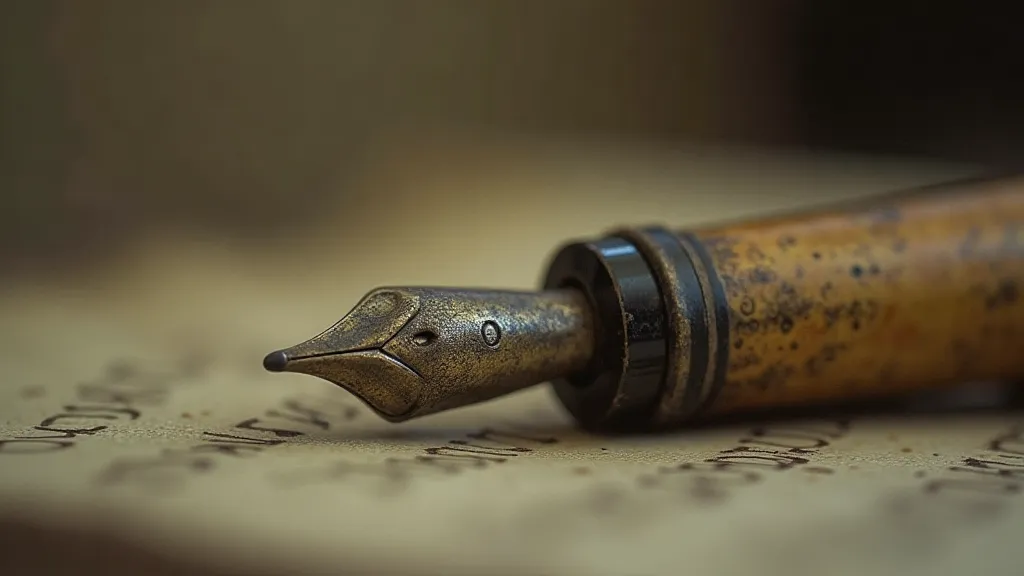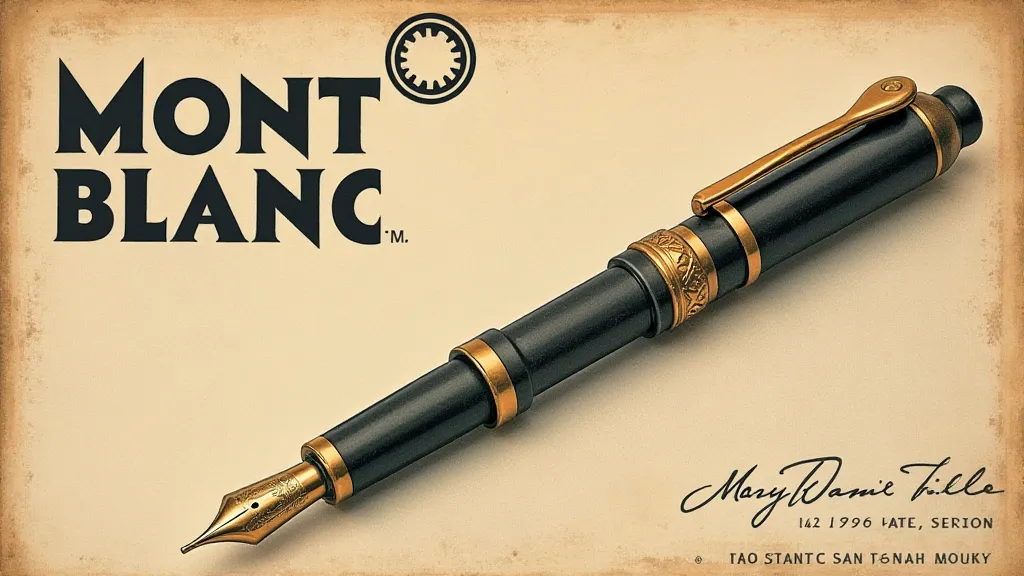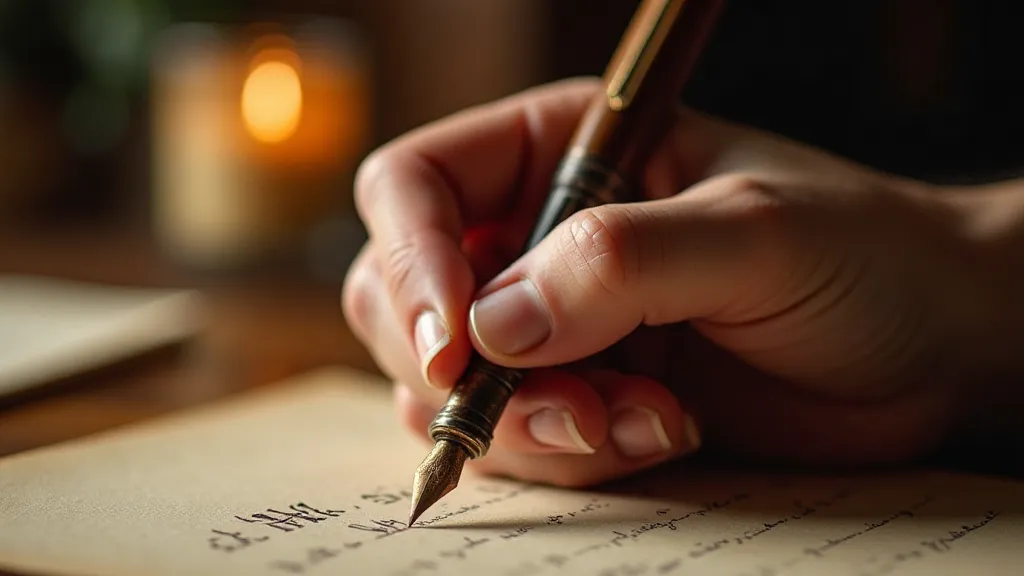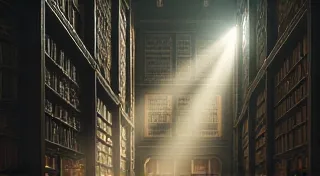Ink's Ephemerality: A Reflection on the Transient Nature of Collectible Pens
There’s a peculiar melancholy that settles when you hold an antique pen. It’s more than the weight of metal and resin in your hand; it's the weight of history, of countless intentions put to paper, of a fleeting existence captured in elegant form. Collecting these relics, these echoes of bygone eras, isn't merely about acquiring beautiful objects. It's an exercise in acknowledging the transient nature of all things, a quiet conversation with time itself.
I recall the first antique pen that truly captivated me. It was a Waterman’s Ideal from the early 20th century, found in a dusty antique shop in rural Pennsylvania. The celluloid was faded, the gold nib slightly bent, but the sheer presence of it… it whispered of a different world. A world of handwritten letters, meticulous record-keeping, and the deliberate act of putting thoughts into words. It wasn't just an object; it was a portal.

The Craftsmanship: A Testament to a Lost Art
The quality of craftsmanship in antique pens is staggering. Mass production, while democratizing access to writing instruments, often sacrifices the meticulous attention to detail found in these older examples. Each component – the nib, the barrel, the cap – was often crafted by skilled artisans, their expertise passed down through generations. Consider the complexity of creating a gold nib, meticulously shaped to produce a specific line width and flow. Modern manufacturing can replicate the *look*, but rarely the *feel* of a hand-crafted nib. The responsiveness, the subtle flex, the way it dances across the paper… that's a legacy of artistry.
Brands like Conway Stewart, for example, were British hallmarks of quality. Their pens, often featuring stunning variegated celluloid patterns, represented the peak of British manufacturing. Or consider Parker’s “Vac-Fill” pens, celebrated for their innovative filling system and elegant designs. These weren't simply tools for writing; they were statements of style and status.
Beyond the Brand: Narratives Inscribed in Metal and Resin
Each antique pen carries a story, even if we never know the specifics. Who held it? What did they write? Were they a celebrated author, a diligent clerk, a loving parent? The marks on the nib, the scratches on the barrel, the slight discoloration of the ink – they are all clues to a past life. Holding a pen that has witnessed history, that has been used to chronicle events, however mundane, connects us to a vast chain of human experience.
Restoration can be a delicate dance. While cleaning and minor repairs are often necessary to preserve the pen's integrity, aggressive restoration can erase the character and history embedded within it. A small chip in the cap, a slight crack in the barrel – these are not flaws; they are marks of time, evidence of a life lived.
Iconic Brands: A Brief Overview
Let’s briefly touch on some significant antique pen brands. Waterman’s, as mentioned, is a cornerstone of the collecting world. Their early “Ideal” pens are highly sought after, prized for their elegant designs and reliable performance. Sheaffer, another American giant, is known for its innovative filling systems and distinctive clip designs. The “Lifetime” models are particularly coveted. Lamy, while now a modern brand, has a fascinating history dating back to the late 19th century, and early examples can be quite collectible.
Montblanc, synonymous with luxury and prestige, is a relative latecomer compared to some other brands, but its early pens from the pre-war era (before World War II) are exceptionally desirable. Their pens often featured intricate designs and impeccable craftsmanship, reflecting their position as a symbol of refined taste.

Dux, a relatively small German brand, produces pens with a unique, distinctive celluloid pattern often referred to as "swirling." Their pens are gaining popularity among collectors for their beauty and relative affordability.
The Philosophical Weight: Ephemerality and Memory
Collecting antique pens isn't just about possessing beautiful objects; it’s about engaging with the philosophy of time. These pens are tangible reminders that everything is fleeting. The ink fades, the celluloid cracks, the metal tarnishes. Yet, in their impermanence, they gain a profound beauty. They force us to confront the ephemeral nature of our own existence, to appreciate the present moment, and to find meaning in the enduring power of human creativity.
Consider the act of writing itself. In a world dominated by digital communication, the deliberate act of putting pen to paper is becoming increasingly rare. The scratch of the nib, the subtle variations in ink flow, the physical connection between hand and instrument – these sensory experiences are lost in the digital realm. Collecting antique pens is, in a way, a rebellion against the relentless march of technology, a reclaiming of a more tactile and deliberate way of interacting with the written word.
Collecting Considerations: A Few Words of Advice
For those interested in starting a collection, a few words of advice are in order. Start with a brand or style that genuinely appeals to you. Research is key – understand the different eras, models, and materials. Be prepared to invest time and patience. Condition is paramount – a pen in excellent condition will generally command a higher price. Authenticity is also crucial – be wary of fakes and reproductions. And most importantly, enjoy the journey!
Ultimately, the true value of an antique pen isn’t measured in dollars and cents. It’s measured in the stories it holds, the memories it evokes, and the connection it provides to a past that continues to resonate in the present. It is an appreciation for the elegance and thoughtfulness that seems to have diminished in the age of mass production and digital ease.






